In humans, sperm are produced in the
- a. spermatophore.
- b. seminiferous tubules.
- c. epididymis.
- d. urethra.
Introduction:
The male reproductive system consists of the testes which produce sex hormones and sperm; glands that secrete the substances which nourish and activate the sperm, and tubes that collect the sperm and conduct them out of the body. The sex hormone such as testosterone and sperm are produced at the beginning of the puberty.
Answer to Problem 1MC
Correct answer:
In humans, sperms are produced in the seminiferous tubules. Therefore, option (b) is correct.
Option (b) is given as “seminiferous tubules”.
Explanation of Solution
Justify reason for the correct statement:
Sperms are produced in the testes, and each testes is filled with the coiled structure, called the seminiferous tubules in which sperm are produced. The inner lining of the seminiferous tubules contains two types of cells, the stem cells called the spermatogonial stem cells, which produce sperm, and the Sertoli cells which nourish the developing sperm.
Hence, option (b) is correct.
Justify reasons for the incorrect statements:
Option (a) is given as “spermatophore”.
Spermatophore is a protein capsule which contains a mass of spermatozoa. So, sperm is not produced in the spermatophore. Hence, it is a wrong answer.
Option (c) is given as “epididymis”.
Epididymis is a long folded tube-like structure in which sperm are stored and mature further. Hence, it is a wrong answer.
Option (d) is given as “urethra”.
The urethra conducts urine and sperm out of the body during urination and ejaculation respectively. Hence, it is a wrong answer.
Hence, options (a), (c), and (d). are incorrect.
Hence, sperms are produced in the seminiferous tubules. The inside wall of the seminiferous tubules contains the stem cells called the spermatogonial stem cells, which produce sperm.
Want to see more full solutions like this?
Chapter 42 Solutions
Biology
Additional Science Textbook Solutions
Campbell Essential Biology (7th Edition)
Introductory Chemistry (6th Edition)
Chemistry & Chemical Reactivity
Genetics: From Genes to Genomes
Microbiology Fundamentals: A Clinical Approach
- ✓ Details Draw a protein that is embedded in a membrane (a transmembrane protein), label the lipid bilayer and the protein. Identify the areas of the lipid bilayer that are hydrophobic and hydrophilic. Draw a membrane with two transporters: a proton pump transporter that uses ATP to generate a proton gradient, and a second transporter that moves glucose by secondary active transport (cartoon-like is ok). It will be important to show protons moving in the correct direction, and that the transporter that is powered by secondary active transport is logically related to the proton pump.arrow_forwarddrawing chemical structure of ATP. please draw in and label whats asked. Thank you.arrow_forwardOutline the negative feedback loop that allows us to maintain a healthy water concentration in our blood. You may use diagram if you wisharrow_forward
- Give examples of fat soluble and non-fat soluble hormonesarrow_forwardJust click view full document and register so you can see the whole document. how do i access this. following from the previous question; https://www.bartleby.com/questions-and-answers/hi-hi-with-this-unit-assessment-psy4406-tp4-report-assessment-material-case-stydu-ms-alecia-moore.-o/5e09906a-5101-4297-a8f7-49449b0bb5a7. on Google this image comes up and i have signed/ payed for the service and unable to access the full document. are you able to copy and past to this response. please see the screenshot from google page. unfortunality its not allowing me attch the image can you please show me the mathmetic calculation/ workout for the reult sectionarrow_forwardIn tabular form, differentiate between reversible and irreversible cell injury.arrow_forward
- 1.)What cross will result in half homozygous dominant offspring and half heterozygous offspring? 2.) What cross will result in all heterozygous offspring?arrow_forward1.Steroids like testosterone and estrogen are nonpolar and large (~18 carbons). Steroids diffuse through membranes without transporters. Compare and contrast the remaining substances and circle the three substances that can diffuse through a membrane the fastest, without a transporter. Put a square around the other substance that can also diffuse through a membrane (1000x slower but also without a transporter). Molecule Steroid H+ CO₂ Glucose (C6H12O6) H₂O Na+ N₂ Size (Small/Big) Big Nonpolar/Polar/ Nonpolar lonizedarrow_forwardwhat are the answer from the bookarrow_forward
 Concepts of BiologyBiologyISBN:9781938168116Author:Samantha Fowler, Rebecca Roush, James WisePublisher:OpenStax College
Concepts of BiologyBiologyISBN:9781938168116Author:Samantha Fowler, Rebecca Roush, James WisePublisher:OpenStax College Human Biology (MindTap Course List)BiologyISBN:9781305112100Author:Cecie Starr, Beverly McMillanPublisher:Cengage Learning
Human Biology (MindTap Course List)BiologyISBN:9781305112100Author:Cecie Starr, Beverly McMillanPublisher:Cengage Learning
 Biology (MindTap Course List)BiologyISBN:9781337392938Author:Eldra Solomon, Charles Martin, Diana W. Martin, Linda R. BergPublisher:Cengage Learning
Biology (MindTap Course List)BiologyISBN:9781337392938Author:Eldra Solomon, Charles Martin, Diana W. Martin, Linda R. BergPublisher:Cengage Learning Human Physiology: From Cells to Systems (MindTap ...BiologyISBN:9781285866932Author:Lauralee SherwoodPublisher:Cengage Learning
Human Physiology: From Cells to Systems (MindTap ...BiologyISBN:9781285866932Author:Lauralee SherwoodPublisher:Cengage Learning





